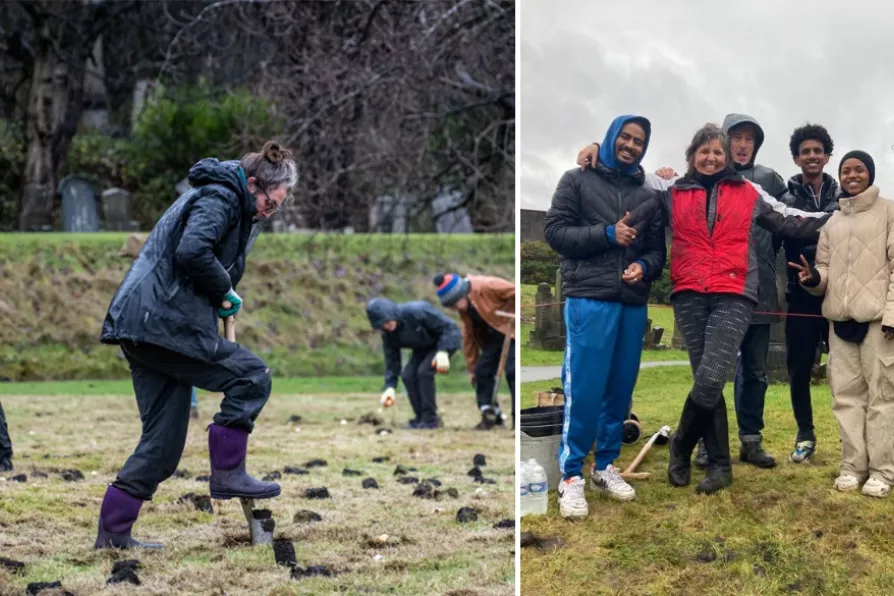MARIA DUARTE is swept along by the cocky self-belief of a ping-pong hustler in a surprisingly violent drama

 COMMUNITY ACTION: Volunteers begin work on The Memorial To The Unremembered in Glasgow Necropolis
[Alasdair Smith]
COMMUNITY ACTION: Volunteers begin work on The Memorial To The Unremembered in Glasgow Necropolis
[Alasdair Smith]
SINCE the early 1980s and Test Dept, Angus Farquhar’s work has been founded in collective action, and large-scale community projects. What is it that makes people act collectively?
“There has to be a good idea,” he replies. “It has to be something that sparks each person individually, so that they can give of themselves without losing part of themselves.”
The work started in protest against Thatcher. “But,” says Farquhar, “we were always on the losing side, in solidarity with the miners’ strike, the ambulance workers’ strike, the print workers’ strike. I was very involved with those at the time. It was very black and white.”

MIKE QUILLE applauds an excellent example of cultural democracy: making artworks which are a relevant, integral part of working-class lives

Incoming Usdaw general secretary JOANNE THOMAS talks to Ben Chacko about workers’ rights, Labour and how to arrest the decline of the high street

LYNNE WALSH reports from last weekend’s moving remembrance of the International Brigades in London’s Jubilee Gardens where anti-fascists gathered to hear how even in the darkest of times we can build a vision of a better tomorrow, as the Brigaders fought to do 89 years ago

It’s tiring always being viewed as the ‘wrong sort of woman,’ writes JENNA, a woman who has exited the sex industry










